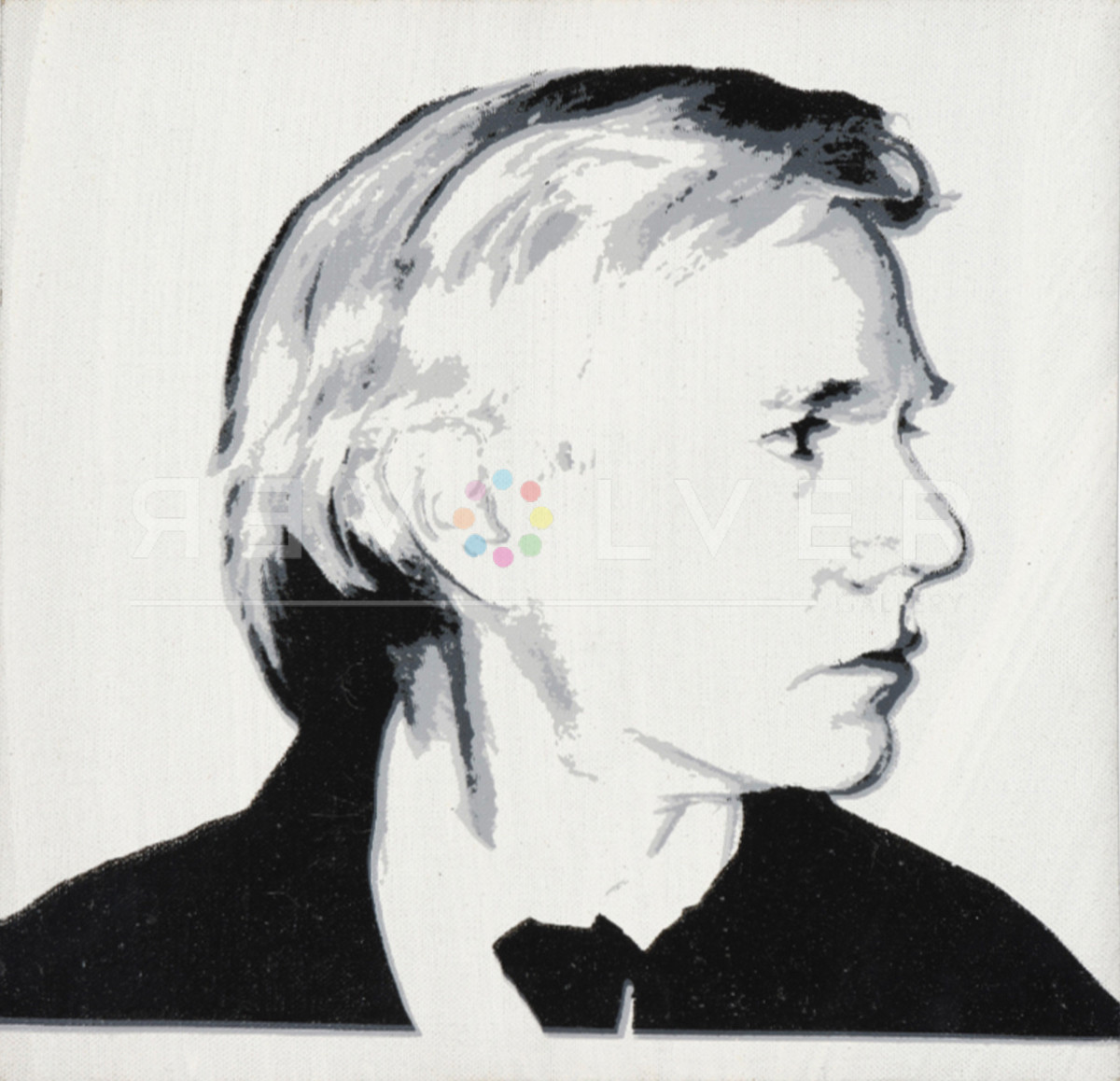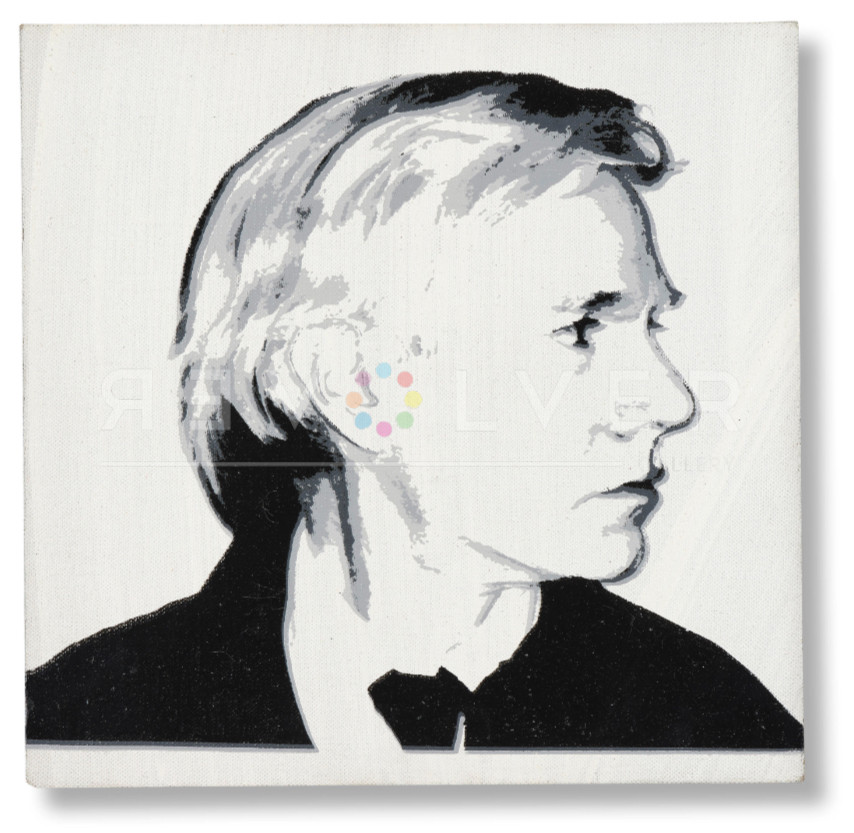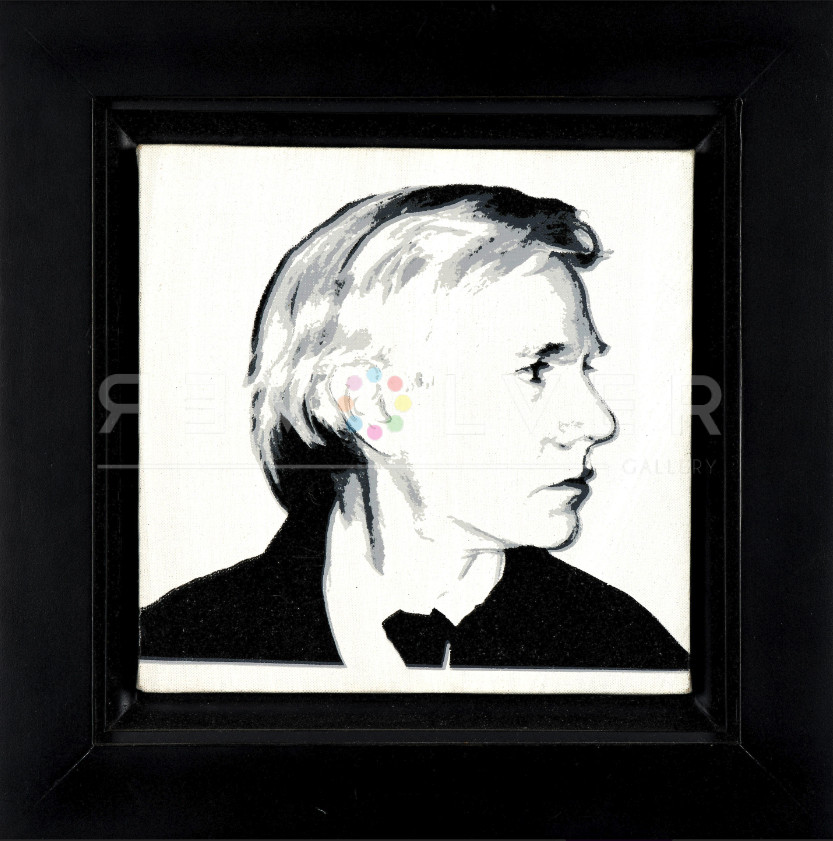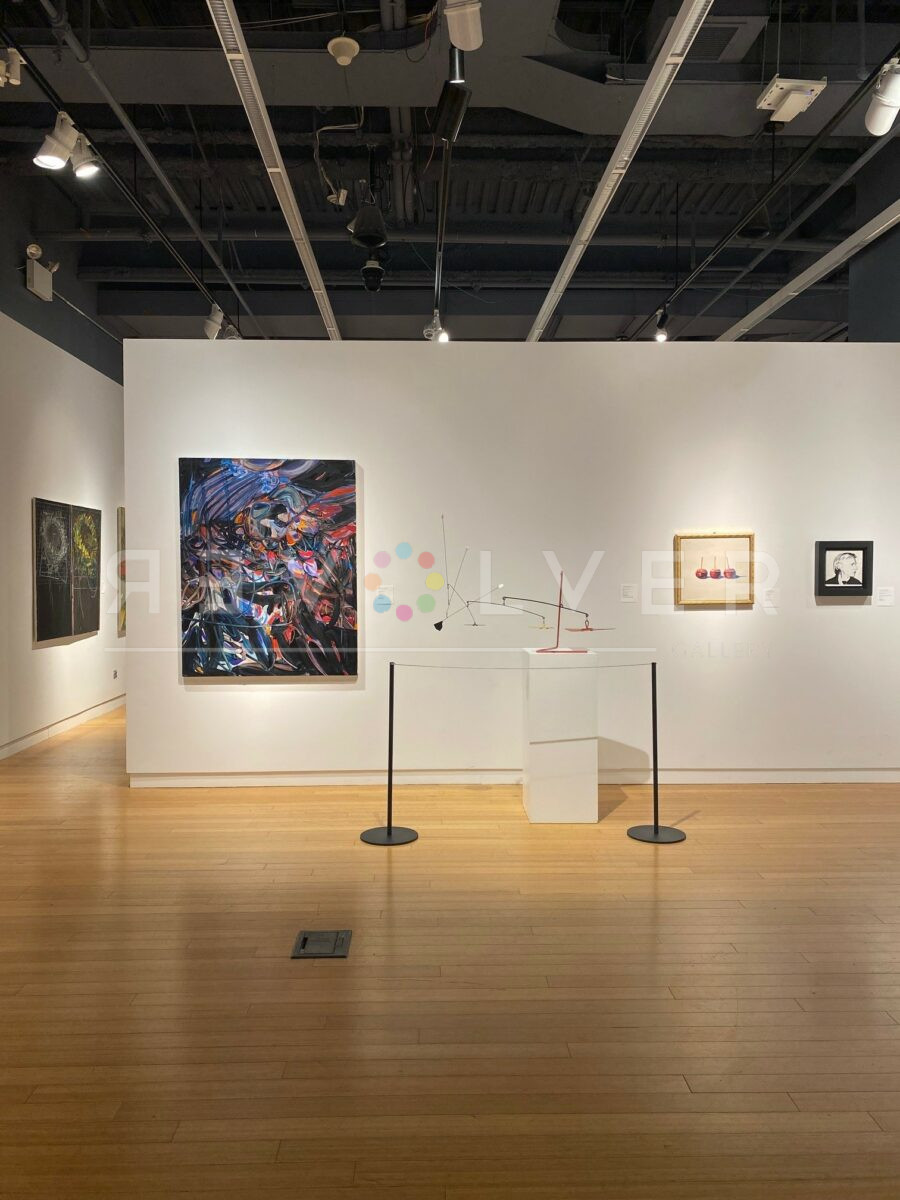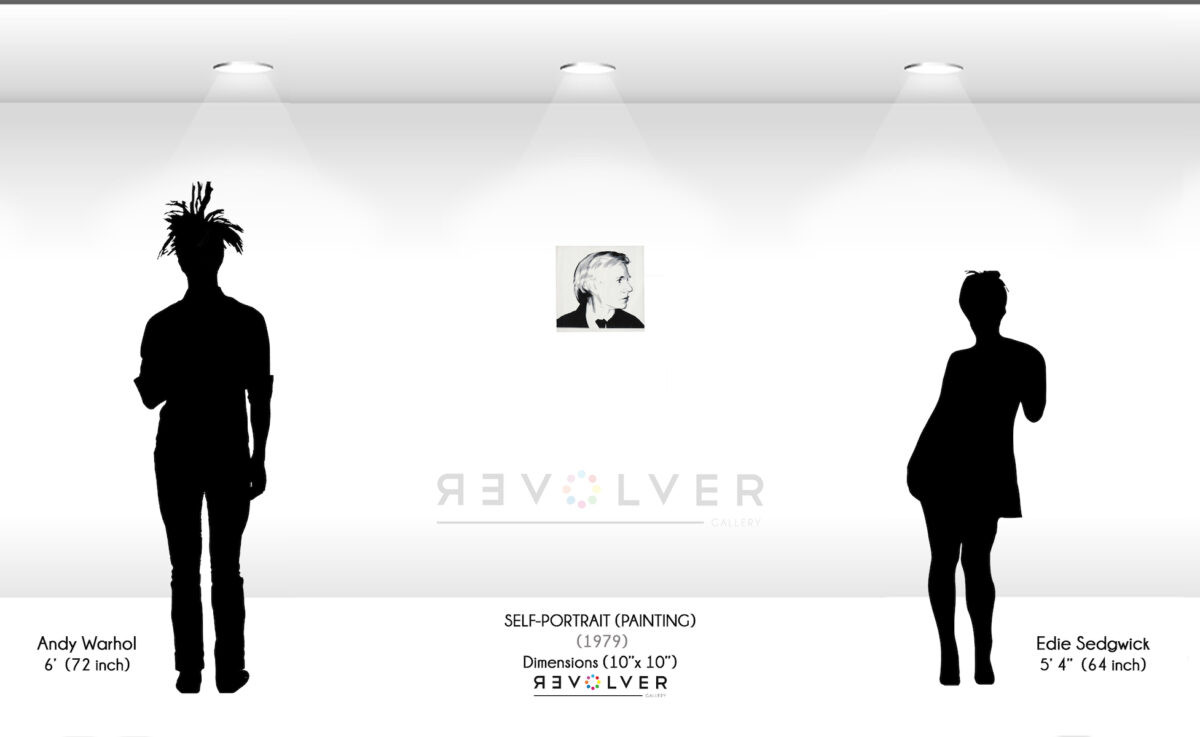“In the vast universe of Andy Warhol’s art, where celebrity and consumerism often take center stage, there lies a series of introspective gems: his self-portraits. ‘Self-Portrait (Painting)’ crafted in 1979, is not just a reflection of Warhol’s image but a deep dive into his psyche, his relationship with fame, and the ever-evolving landscape of popular culture.”
Andy Warhol crafted this Self-Portrait (Painting) in 1979. It is a remarkable and unique artwork that offers a glimpse into the artist’s exploration of identity, fame, and the dynamic relationship between the artist and society. Created with acrylic paint and silkscreen ink on canvas, this one-of-a-kind piece measures 10″ × 10″ (25.4 × 25.4 cm).
This self-portrait stands as a testament to Warhol’s mastery of Pop Art portraiture, except here he skillfully directs the spotlight back onto himself. Through his distinct artistic style, Warhol delves into the surface-level nature of his image and identity, revealing his enduring fascination with fame and the ever-evolving landscape of popular culture.
Throughout his career, Warhol continually experimented with self-portraiture, and in this particular piece, he seeks to exert control over the viewer’s perceptions of him. As an artist who oscillated between the limelight and an enigmatic persona, Self-Portrait (Painting) simply and eloquently embodies the complexities of Warhol’s relationship with the public and his art. Distinct from many of his other self-portraits, where he confronts the viewer’s gaze directly with his own, this artwork portrays the artist in profile, from the shoulders up, rendered in a striking monochromatic palette of black, white, and nuanced shades of gray, as if embossed on a coin.
A defining aspect of Warhol’s artistic vision lies in his deliberate absence as a painter. Renowned for embracing mechanical processes and mass production, as exemplified in his iconic Campbell’s Soup series, he consciously distances himself from the traditional role of the artist as the subjective creator. This intentional detachment adds an intriguing layer to his scattered self-portraits, including Self-Portrait (Painting). His presence becomes an enigma—apparent only as he meticulously shapes and presents himself to the viewer.
The use of silkscreen in Self-Portrait (Painting) lends a sense of replication and mechanical precision, further underscoring Warhol’s fascination with mass production and the commodification of art and fame. By employing this technique, he elevates himself as both the subject and the artist, mirroring the duplicity and duplicability of his own image within the realm of celebrity culture.
As we explore this unique self-portrait, we are drawn into the enigmatic world of Andy Warhol, a visionary artist who blurred the lines between art and life. His iconic status and enduring influence on contemporary art continue to captivate audiences, making Self-Portrait (Painting) an extraordinary addition to his illustrious body of work.
Other self-portraits of Warhol include Self-Portrait (FS II.16), Self-Portrait (FS II.156A), and the Untitled (Self-Portrait) NFT that Warhol created on an Amiga computer.

